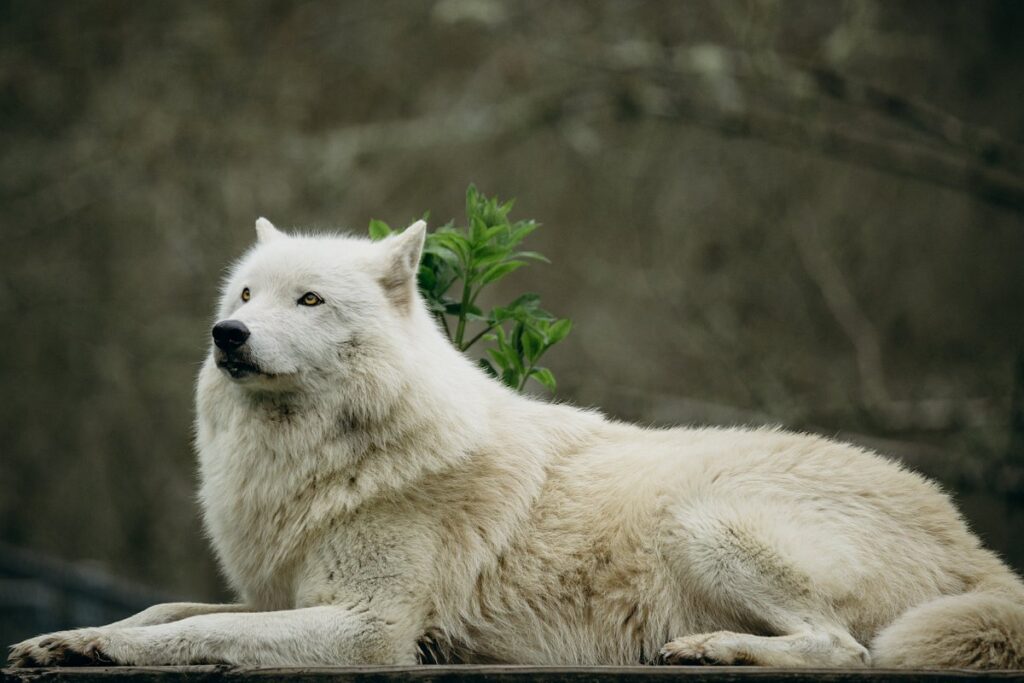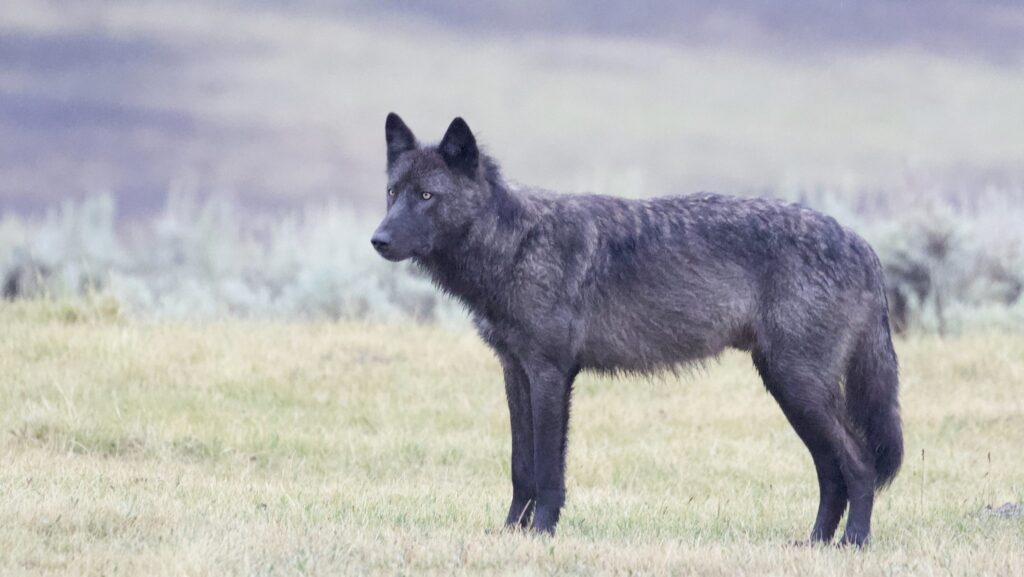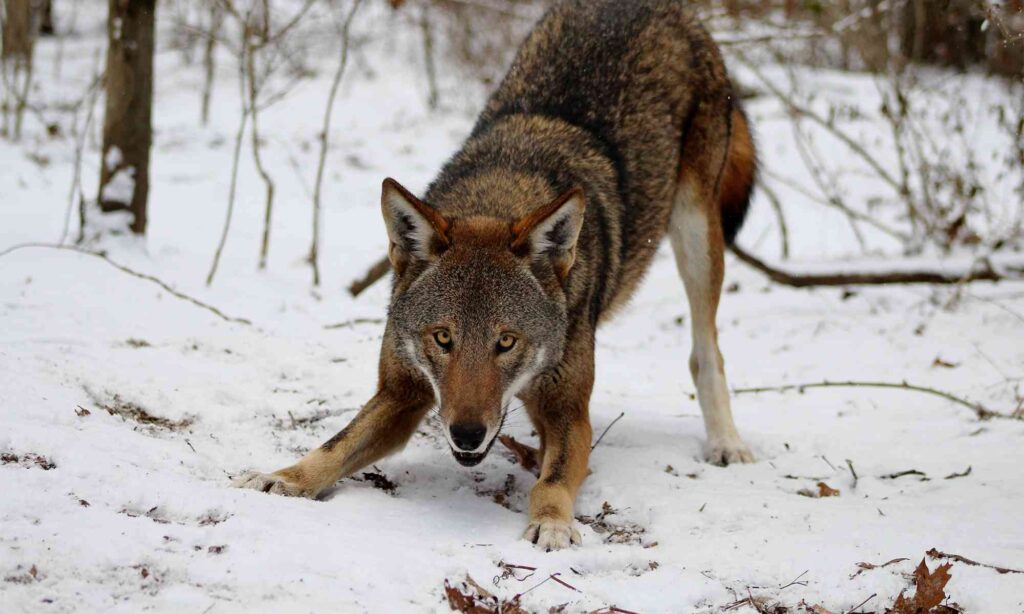Are you ready to dive into the wild and wonderful world of wolf colors? Get ready to be amazed by the vibrant palette that nature has bestowed upon these majestic creatures. From snowy whites to fiery reds, there are six possible wolf colors that will leave you howling with excitement. But why do these colors occur, and what do they mean? Join us as we unravel the mysteries behind the genetics, conservation, and symbolism of wolf colors. It’s time to unleash your curiosity and embark on a journey like no other. So sit back, relax, and let’s explore the fascinating world of these captivating creatures and their mesmerizing hues. Let the adventure begin!
Exploring the Palette of Wolf Colors
Imagine a canvas splashed with diverse shades, each color telling a unique story. This is the world of Wolf Colors. Wolves, the majestic members of the Canidae family, don a palette of colors as rich and varied as the landscapes they inhabit. From the icy whites of the Arctic, through the dreamy grays of woodland forests, to the profound blacks of the night, their hues are a mirror of the wild. However, these colors are far from mere aesthetics; they are survival tools, genetic markers, and communication mediums.
Also check out: How Big Are Wolves? A Fascinating Size Comparison with Dogs, Humans, and Other Wild Animals
Let’s delve into this fascinating world, where science and art intertwine, to paint a vivid picture of one of nature’s most iconic and misunderstood creatures, the Canis lupus.
| Wolf Color | Significance |
|---|---|
| White (Arctic Wolves) | Camouflage in snowy environments |
| Gray | Mottled pattern aids in hunting and evasion |
| Black | Could be a sign of genetic health; prevalent in forested areas |
| Brown/Red | Common in desert and mountainous regions for camouflage |
| Mixed-Color | Common combination of white, gray, black, brown, and red |
Observe a pack of wolves, and you will notice a remarkable array of colors. The mosaic of white, gray, black, brown, red, and mixed colors are not random. Each color is a testament to their incredible ability to adapt, to blend into their surroundings, and to communicate. Mother Nature, in her wisdom, has designed these colors for a purpose – a purpose far beyond our visual pleasure.
From the moment they are born, wolves’ colors start telling their survival stories. Wolf pups are often born with darker coats, a deep bluish-gray to black color, perhaps Mother Nature’s way of providing extra protection. But as they age, their fur starts to lighten, reflecting their rich life experiences and the diverse hues of their habitats.
Exploring the palette of wolf colors is not just about appreciating the beauty of these magnificent creatures. It is also about understanding their lives, their struggles, and their triumphs. It’s a fascinating journey that contributes significantly to conservation efforts, allowing us to respect and protect these magnificent creatures better.
Decoding the Genetics of Wolf Colors: A Journey into their Chromosomal Canvas
Just as artists use a palette of colors to create a masterpiece, nature paints each wolf with a unique blend of hues, making them living, breathing works of art. But have you ever wondered what lies behind this magnificent canvas? The answer rests within the intricate world of genetics.
In the chromosomal labyrinth of a wolf, two specific pigments, eumelanin and pheomelanin, are the true artisans at work, shaping the color of their coats. Produced by cells called melanocytes, eumelanin gifts wolves with a spectrum of black-to-brown shades, while pheomelanin imparts a stunning array of yellow-to-red tones.
Read also: Are These the 10 Largest Wolves on the Planet? Unveiling the Mighty Beasts
But the story doesn’t end there. Like master puppeteers, two genes, Agouti (ASIP) and Melanocortin 1 receptor (MC1R), pull the strings behind the scenes, controlling the production and distribution of these pigments. Interplay between these genes creates the fascinating variety of colors we observe in wolves.
“Variations in the wolf’s coat color are like a symphony, where genes play the notes, and nature conducts the orchestra.”
Yet, the genetic symphony isn’t always uniform. In fact, it’s the anomalies, the unexpected notes, that often result in the most striking patterns. A black coat, for instance, is often attributed to a mutation in the beta-defensin CBD103 gene, also known as the K locus. This mutation is thought to have been incorporated into the wolf genome through interbreeding with domestic dogs.
Adding another layer of complexity, these color traits are inheritable, passed down from generation to generation. This creates isolated populations with distinct colorations, a beautiful testament to the power of adaptation over time.
In essence, the genetics behind a wolf’s coloration is a complex tapestry, woven with threads of inherited traits, random mutations, and nature’s guiding hand. And it’s this tapestry that not only creates the visual spectacle we admire, but also provides wolves with the crucial camouflage they need to survive and thrive in their respective habitats.
Unraveling the Colorful Tapestry of Wolf Coats
Embarking on a journey through the world of wolves, we encounter a mesmerizing array of colors. Each hue, from the deepest black to the purest white, tells a tale of survival, adaptation, and the intricate dance of genetics.
1. The Enigmatic Gray Wolves
Step into the wilderness, and you might have a chance encounter with the gray wolves, the most common and distributed species. They wear a mottled cloak of gray, brown, black, and white fur, a testament to their evolutionary journey. Yet, this moniker can be deceptive, as some gray wolves might exhibit a coat that is almost entirely white, black, or brown. The variety in their coats is a survival adaptation, breaking up their silhouette and providing camouflage for hunting and evading predators.
2. The Majestic White Wolves

white wolf
Wandering further north, you may meet the ethereal Arctic and Tundra wolves, known for their pristine white coats. Like spectral guardians of the snow, their coloration blends perfectly into their icy realms. These white wolves hold a cherished place in human culture, often symbolizing wisdom, power, and mystery. In Native American cultures, they are revered as spiritual guides, embodying purity and strength.
3. The Mysterious Black Wolves

black wolf
Cross paths with a black wolf, and you are witnessing a fascinating twist of genetics. The dark coat, a result of a mutation in the beta-defensin CBD103 gene, is a story of the shared history between dogs and wolves. This dark allure is more common in North American wolf populations, casting a mysterious and powerful image that permeates folklore and mythology.
4. The Endangered Red Wolves

red wolves
Stroll through the southeastern United States, and you may spot a red wolf, an endangered species with a unique coloration. Their coat, a palette of tawny and reddish hues to almost black, is especially vibrant on their ears, head, and legs. The plight of the red wolves is a call to arms for conservation efforts, with breeding programs striving to maintain their genetic diversity.
5. The Stealthy Brown Wolves
Delve into forested areas, and you could glimpse a brown wolf. Their coats span a spectrum of brown shades, from light brown to dark chocolate. The intensity of the brown coloration is a testament to their environment, aiding in their stealth and survival.
6. The Camouflaged Mixed-Color Wolves
In the wild, you might also encounter mixed-color wolves, common in the Eurasian and North American gray wolf subspecies. These wolves wear a patchwork quilt of colors, an ingenious camouflage strategy promoting survival and adaptability to environmental pressures. Their coats are a mix of white, gray, black, brown, and red, a living canvas representing the rich diversity in the wolf family.
Read also: Deer Hooves Unveiled: The Ultimate Guide to Understanding Deer Feet
Each color, each pattern, is a chapter in the wolf’s tale of survival, making the world of wolves a vibrant kaleidoscope of color and life.
Unveiling the Significance of Wolf Colors in Conservation
Peeling back the layers of understanding wolf colors unveils the deep-seated importance of this fascinating aspect of their biology. Unraveling the mysteries of their vibrant hues, intriguing patterns, and distinctive markings is more than a scientific endeavor. It’s akin to reading a living, breathing storybook inscribed with the tales of survival, adaptation, and evolution. It’s a testament to the wolves’ enduring resilience amidst the relentless march of time and the ceaseless ebb and flow of their habitats.
More than just a captivating spectacle of nature’s artistry, these variations in coloration serve a pivotal role in the realm of wildlife conservation. The study of wolf colors, intricately woven into the fabric of their genetics, helps in identifying different species and subspecies. This is an invaluable tool in monitoring and maintaining the intricate tapestry of biodiversity within wolf populations.
Genetic diversity, as reflected in their color variations, is the backbone of a wolf population’s health and resilience. It is their shield against a multitude of threats, whether it be the invisible specter of disease or the tangible impact of environmental changes. A vibrant and diverse gene pool ensures that the wolves can adapt, survive, and thrive.
Read more: What Animals Prey on Beavers? Discover the Top 10 Natural Predators
This understanding of wolf colors and their genetic implications is crucial in shaping strategies aimed at preserving the wolves and their habitats. Conservationists can prioritize individuals with color adaptations that are linked to survival in specific environments, especially when planning reintroduction or captive breeding programs. For example, the white-coated Arctic wolves are better suited for icy habitats, while the brown wolves blend seamlessly into forested areas.
As we continue our journey into the rich and varied palette of wolf colors, let’s not forget the profound implications it has on the survival of these majestic creatures. By appreciating the intricate weave of wolf colors, we are not only admiring nature’s artistry, but also contributing to the preservation of these magnificent creatures and their homes.
Symbolism of Wolf Colors in Cultures
Immersing ourselves in the vibrant tapestry of wolf colors, we find a treasure trove of symbolism etched deeply into the fabric of many cultures. The myriad hues of these majestic creatures are more than just aesthetic variations; they embody a rich tapestry of spiritual elements, painting a vivid picture of the qualities attributed to wolves in the folklore and mythologies of various societies.
Take, for instance, the white wolf. In the spiritual traditions of several Native American tribes, the white wolf is held in high reverence. Its unstained coat is seen as a symbol of purity, a manifestation of wisdom, and a beacon of spiritual enlightenment. These tribes view the white wolf not merely as an animal but as a sacred entity, a guide along the spiritual path, and a symbol of life’s inherent purity.
“The white wolf is a sacred creature associated with purity, wisdom, and spiritual enlightenment.”
Contrastingly, the black wolf stirs the currents of intrigue and fascination. Its dark, enigmatic coat is often associated with a sense of mystery, a symbol of potent power and unyielding strength. The black wolf’s coloration has etched itself into the cultural consciousness as an emblem of the unknown, reminding us of the deep, hidden powers that lie within nature and ourselves.
Meanwhile, the gray wolf, with its mixed coat color, is perceived as the very embodiment of the wilderness. It represents the untamed, the free, and the instinctive aspects of nature. The gray wolf’s coloration symbolizes the raw beauty of nature and the spirit of the wilderness, emphasizing our intrinsic connection to the natural world.
In conclusion, the colors of wolves are not just a tale of beauty, but a story of survival, adaptation, and the interplay between genetics and the environment. They offer a glimpse into the complex world of these majestic creatures, aiding in conservation efforts, and inspiring cultures around the world.
Read more: Coyote vs. Fox vs. Wolf: Which Canid Reigns Supreme in the Animal Kingdom?
From the pristine white coats to the mysterious black ones, and the distinct gray in between, the hues of wolves serve as a vibrant canvas for the stories we tell about our world and our place in it. They echo our deepest beliefs, our collective wisdom, and our shared experiences. In this intricate ballet of colors and symbols, we find a testament to the enduring bond between humans and wolves, a bond that transcends time and persists across cultures.
Wolves can come in a variety of colors, including grays, whites, blacks, browns, and reds.
The colors of wolves serve important purposes in their lives. They help with camouflage, aiding in hunting and protection from predators. Colors also play a role in communication and signaling genetic health.
The coat color of wolves is determined by two pigments produced by melanocytes: eumelanin and pheomelanin. Genes such as Agouti (ASIP) and Melanocortin 1 receptor (MC1R) play significant roles in controlling these pigments.

